In 1956, legendary photographer Peter Bock-Schroeder visited Celilo Falls, a series of cascades on the Columbia River in Oregon, and captured a series of stunning black and white photographs depicting the life and culture of the Native American fishermen who inhabited the area.
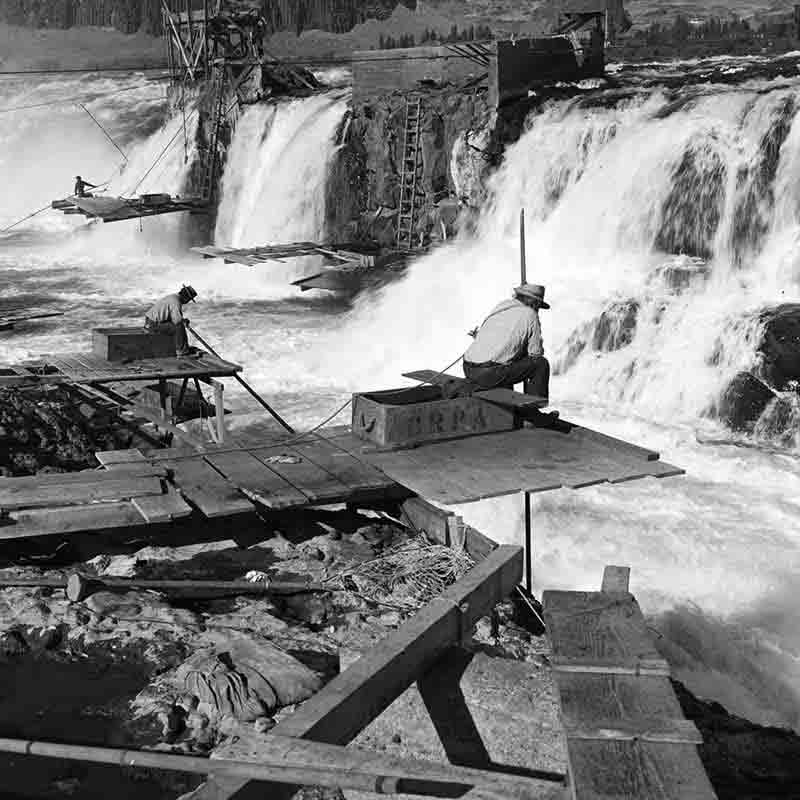
For 15,000 years, native peoples gathered at Wyam to fish and exchange goods. They built wooden platforms out over the water and caught salmon with dipnets and long spears on poles as the fish swam up through the rapids and jumped over the falls.
Rare Black and White Photos of Celilo Falls
Celilo Falls (Wyam, meaning "echo of falling water" or "sound of water upon the rocks," in several native languages) was a tribal fishing area on the Columbia River, just east of the Cascade Mountains, on what is today the border between the U.S. states of Oregon and Washington.
The Happy Fishing Ground, owned by the Wyam Indians, at the Columbia River between Oregon and Washington is endangered to be destroyed through the construction of the "Dallas Dam". During the Fishing Season (April-October) up to 5000 Indians from the Umatilla, Yakima and Warm Spring Reservations come here.
Native American Fishermen
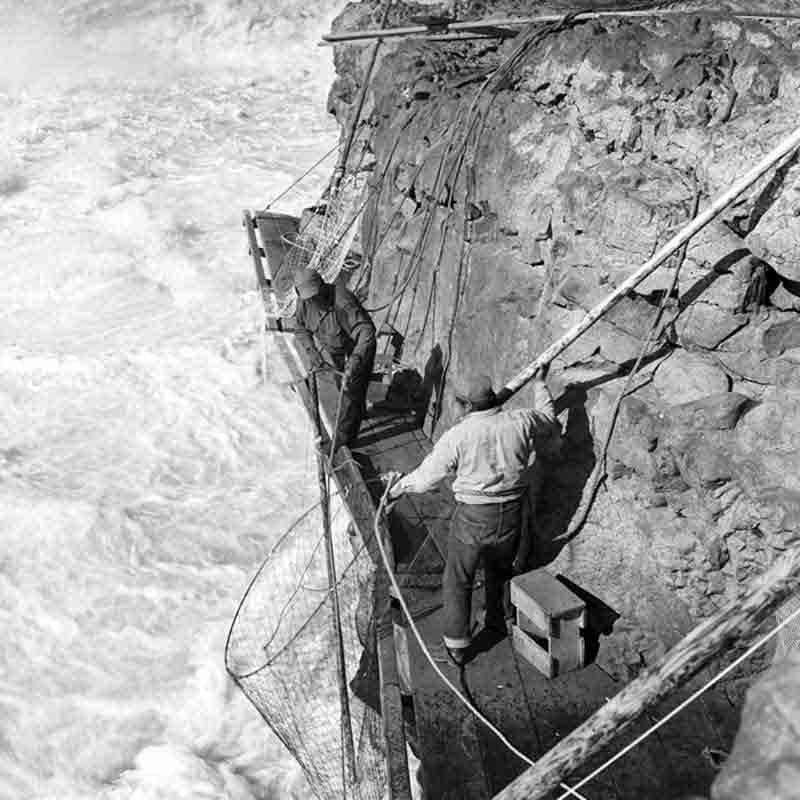
Native settlements has existed here in various configurations for 15,000 years. The Building of the Dallas Dam which will supply a nearby electric power station, means the loss of their income and their ancient tradition.
Celilo Falls History
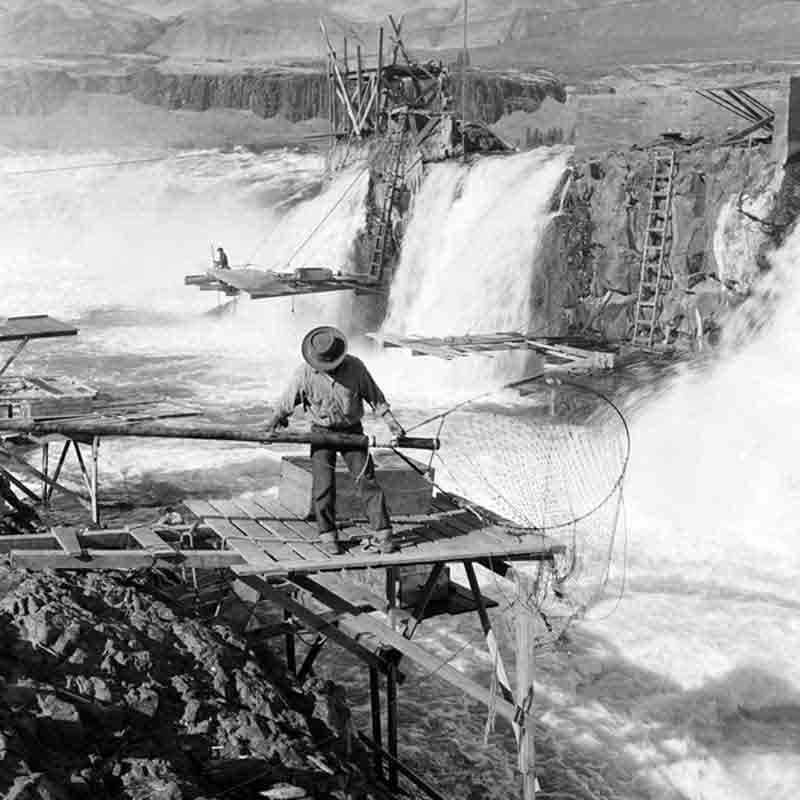
The torrential River will be replaced by a quiet Lake. In the 19th century the Indians were given the exclusive right of the Columbian River by decree of "the white man". Once again the Native Americans learn what these promises are worth. They are now promised apartments and money as compensation for their fishing grounds.
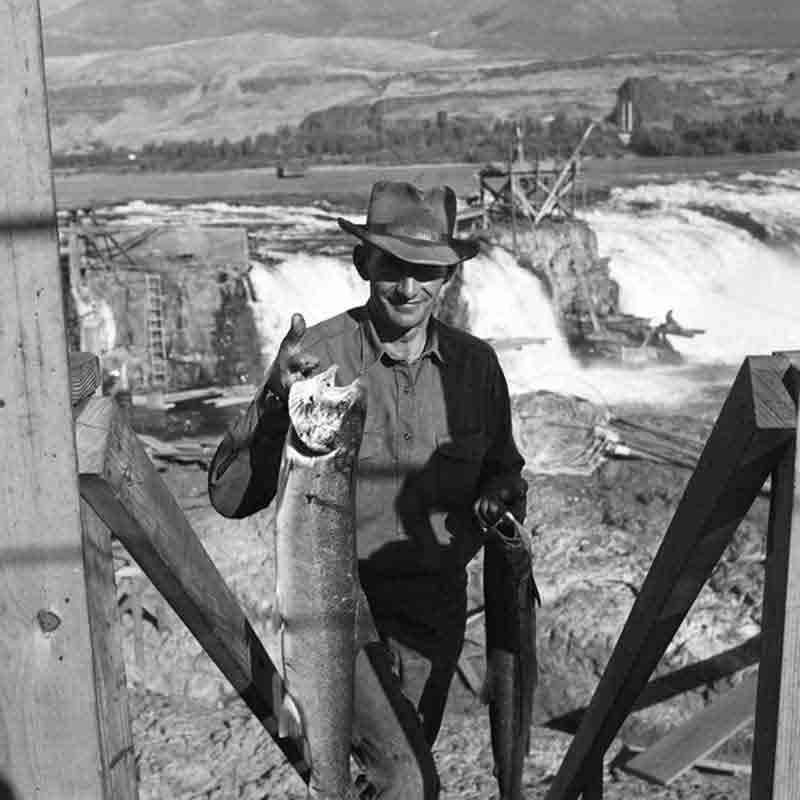
The Indian Families are disgusted by the way the government treats them. The fate of the 20 local families is particular hard.
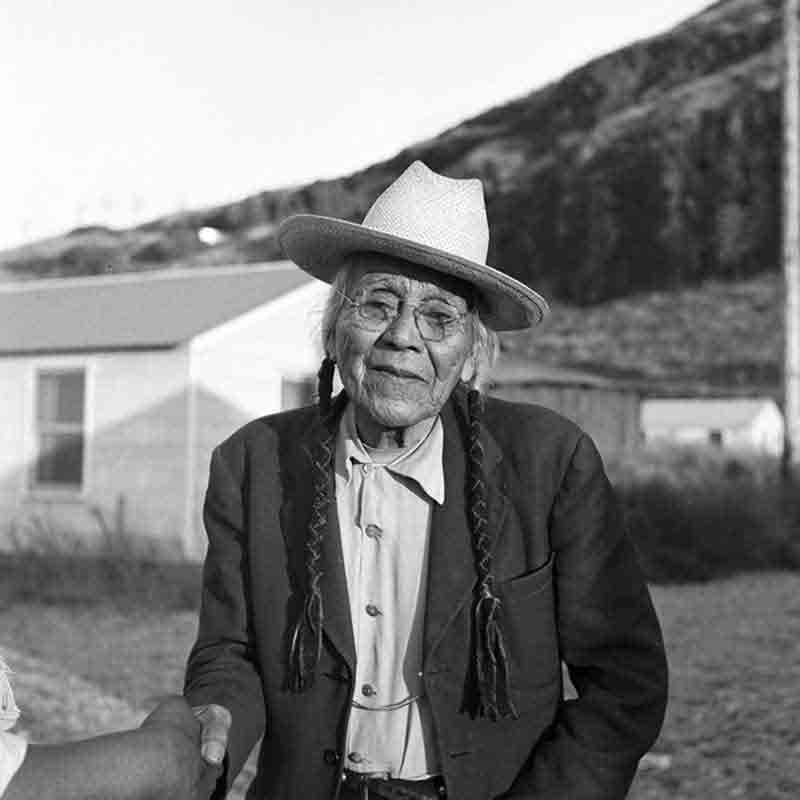
Tommy Thompson served as Chief at Celilo from about 1906 until his death in 1959, two years after the loss of Celilo Falls. A full-blooded member of the Wyam tribe, he was born at Celilo, where his ancestors had always lived and fished. He strongly opposed the building of The Dalles Dam
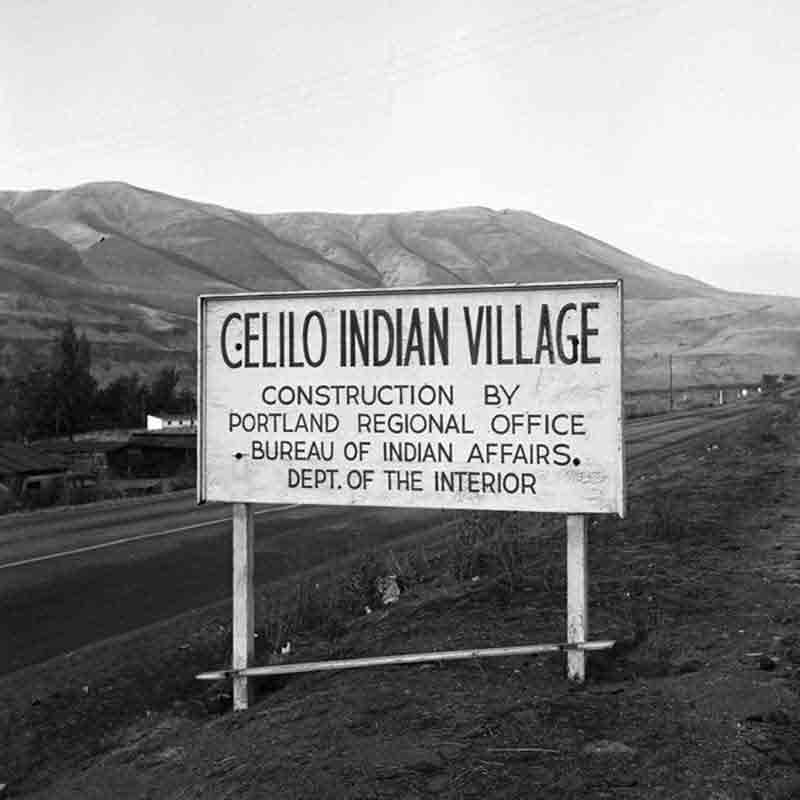
Celilo was the oldest continuously inhabited community on the North American continent until 1957, when the falls and nearby settlements were submerged by the construction of The Dalles Dam. Not only their livelihood is jeopardized, they also have to leave their property. They are outraged by the developments, and this time they want to fight for their right. -PBS 1956
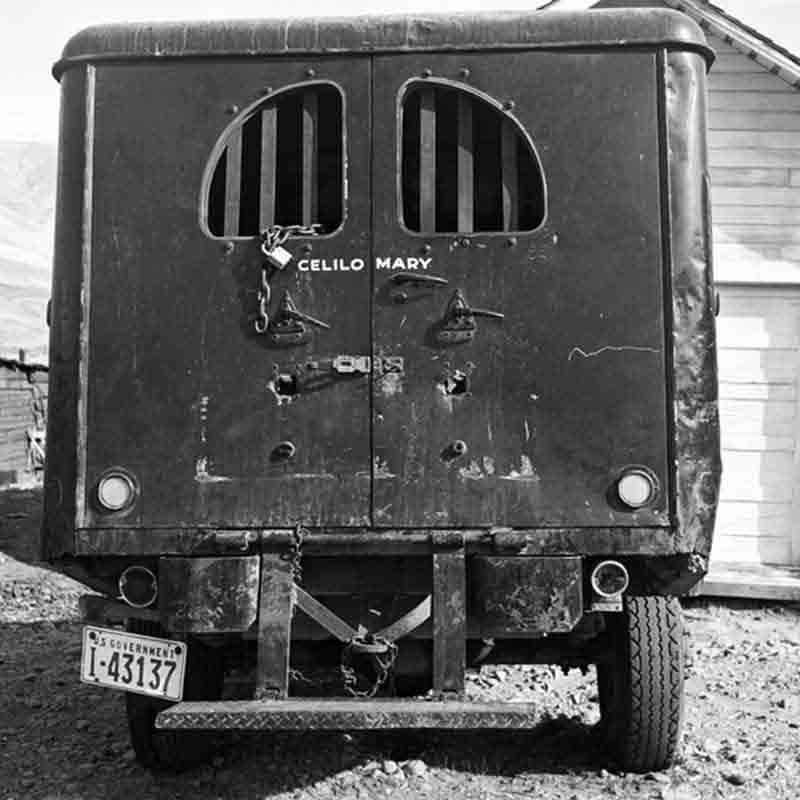
On March 10, 1957, hundreds of observers looked on as a rising Lake Celilo rapidly silenced the falls, submerged fishing platforms, and consumed the village of Celilo, ending an age-old existence for those who lived there. A small Native American community exists today at nearby Celilo Village, on a bluff overlooking the former location of the falls.
In 2008 the Army Corps of Engineers completed a survey of the Celilo Falls site using sonar technology, in response to the 50th anniversary of the flooding of the falls. The survey revealed that the falls remain intact below the artificial lake.
Celilo Falls was a sacred place for the Indian tribes, and these photographs capture the traditions and way of life of the fishermen in a way that conveys their cultural significance. They are also a testament to Bock-Schroeder's ability to portray the humanity and spirit of a given scene.